For many Singaporeans, self-drive holidays in Japan have become synonymous with freedom and discovery. While Hokkaido’s snowy and vast landscapes have long been a favourite, there’s another region offering equally rewarding open roads, breathtaking scenery, and a touch of mystery: Kyushu, Japan’s southernmost main island.
This itinerary takes you on an unforgettable journey from Fukuoka to Yakushima, weaving through Kumamoto’s rich heritage, Kagoshima’s volcanic vistas, and finally, Yakushima’s ancient cedar forests, a UNESCO World Heritage Site.
It’s a self-drive adventure in Japan that captures the essence of Shima no Tabi, which means “island journeys”, for travellers who crave flexibility and exploration off the beaten path.
Why Choose a self-drive tour in Kyushu?
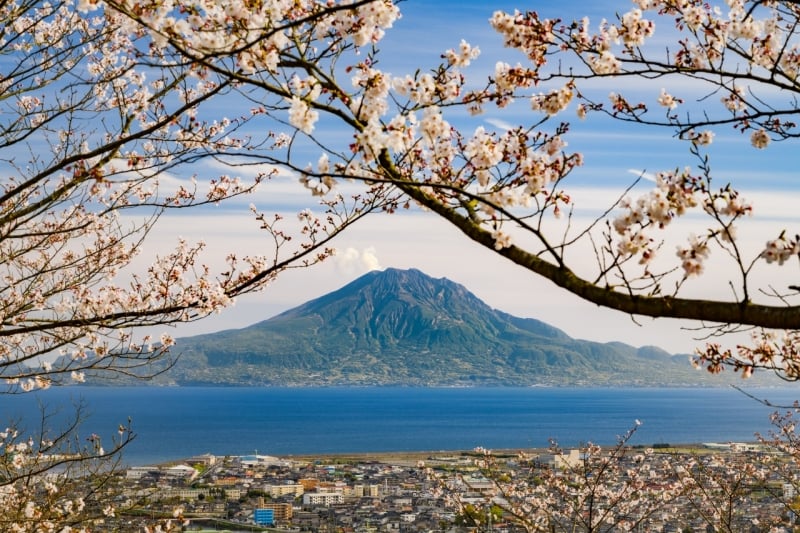
Kyushu is often described as “Japan’s hidden gem”, a land of steaming onsen towns, dynamic volcanoes, and charming coastal drives. Its well-connected expressways, wide roads, and scenic byways make it perfect for first-time self-drivers.
For Singapore travellers, Fukuoka and Kagoshima are conveniently connected by direct flights or short domestic hops from Tokyo or Osaka. With the flexibility of a self-drive itinerary, you can set your own pace. Whether to stop for a bowl of ramen in a countryside town, pull over to admire a volcano view, or wander into a peaceful shrine without worrying about public transport schedules.
Day 1: Singapore → Fukuoka → Kurokawa Onsen
Your self-drive journey kicks off as you land in Fukuoka, Kyushu’s vibrant gateway city. After collecting your rental car from the airport, hit the open road and make your way to Kurokawa Onsen, one of Japan’s most charming and less commercialised ryokan towns nestled in the mountains of Kumamoto Prefecture.
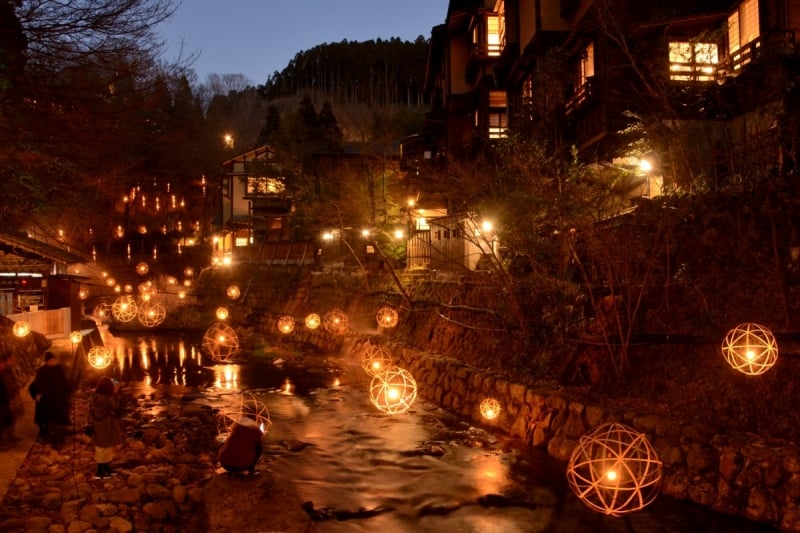
Image credit: Provided by H.I.S.
Kurokawa is famous for its variety of onsen waters, with seven unique types of natural hot springs, each offering distinct textures and mineral benefits. Stay in a traditional ryokan that features both indoor and open-air baths, surrounded by forested hills and misty riversides.
In the evening, experience the magical Yu Akari Illumination, when the town transforms into a glowing wonderland of handcrafted bamboo lanterns that softly light up the riverbanks and pathways. It’s a truly serene sight that captures the essence of Japanese winter warmth and hospitality!
Day 2: Kurokawa Onsen → Aso → Kumamoto
After a rejuvenating morning soak and breakfast at your ryokan, continue your Shima no Tabi journey towards Mount Aso, one of Kyushu’s most spectacular natural landmarks. The drive itself is an experience. You’ll wind through lush countryside and rolling highlands, offering panoramic views that embody the freedom and discovery this road trip represents.
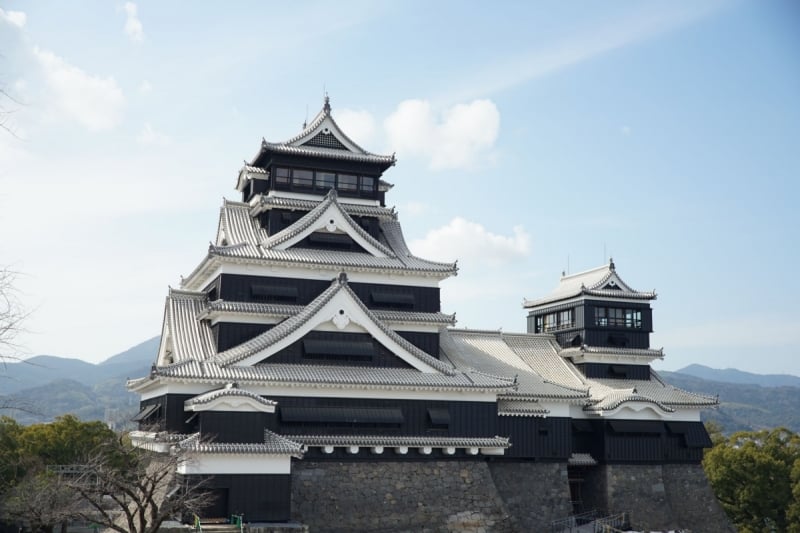
Image credit: Kumamoto City | Official Website
Your first stop is Kumamoto Castle, one of Japan’s most impressive fortresses, beautifully restored after the 2016 earthquake. Then, explore Suizenji Jojuen Garden, a tranquil landscaped garden representing the old Tōkaidō road.
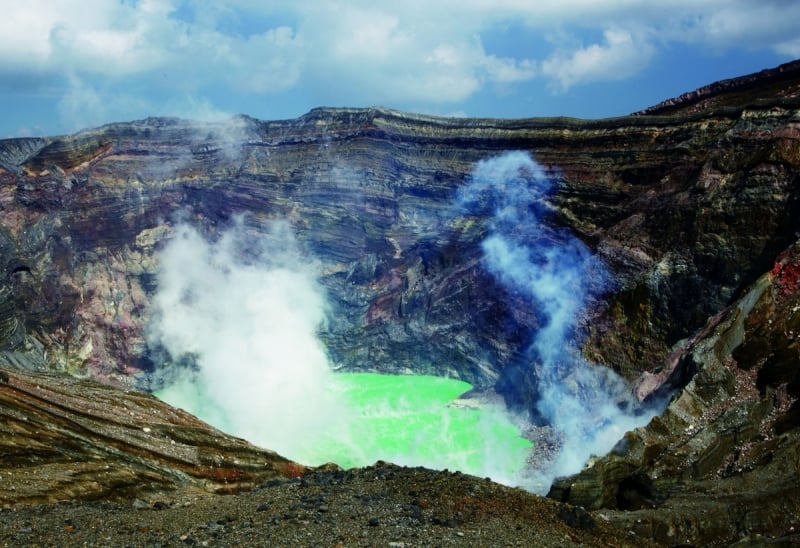
Image credit: Kyushu Tourism Organization | Official Website
At Aso-Kuju National Park, explore the dramatic Nakadake Crater, one of the few active volcano craters in the world that visitors can approach (subject to safety conditions). For a different perspective, consider joining a helicopter ride over Aso, where you’ll get a breathtaking aerial view of the vast caldera and its volcanic peaks!
If you prefer to stay on the ground, horse riding at Kusasenrigahama, a scenic grassy plain dotted with grazing horses, is another unforgettable way to take in the region’s raw beauty.
Day 3: Kumamoto → Kagoshima – Volcanic landscapes and hot springs
From Aso, continue your drive south toward Kagoshima, the city often nicknamed the “Naples of the East” for its seaside charm and volcano backdrop. Get a good rest along the way as you descend into the southern reaches of Kyushu.

Image credit: ©Kagoshima City
The dramatic skyline of Kagoshima is defined by Sakurajima, an imposing active volcano set just across Kinko Bay. Take the ferry over to explore its unique landscape up close! You can even drive along the Sakurajima Lava Trail, a reminder of the volcano’s power.
P.S. Apparently, the volcano has erupted since the 1950s, and sometimes over 200 times a year!
Don’t forget to sample Kagoshima’s famous black pork tonkatsu or sweet potato desserts before winding down at an onsen!
Day 4: Kagoshima → Yakushima – Gateway to an island paradise
After breakfast, it’s time for the next leg of your journey — the enchanting island of Yakushima. Instead of returning your car, continue your journey seamlessly by taking the Yakushima II car ferry, allowing you to bring your vehicle along for a smooth island-hopping experience.
The ferry departs from Kagoshima Port at 8:30 a.m. and arrives at Miyanoura Port around 12:30 p.m., offering a relaxing four-hour voyage with scenic ocean views along the way. On your return, the Yakushima II departs Miyanoura at 1:30 p.m. and reaches Kagoshima at approximately 5:40 p.m. For updated schedules and details, you can visit the official Yakushima II Ferry website.
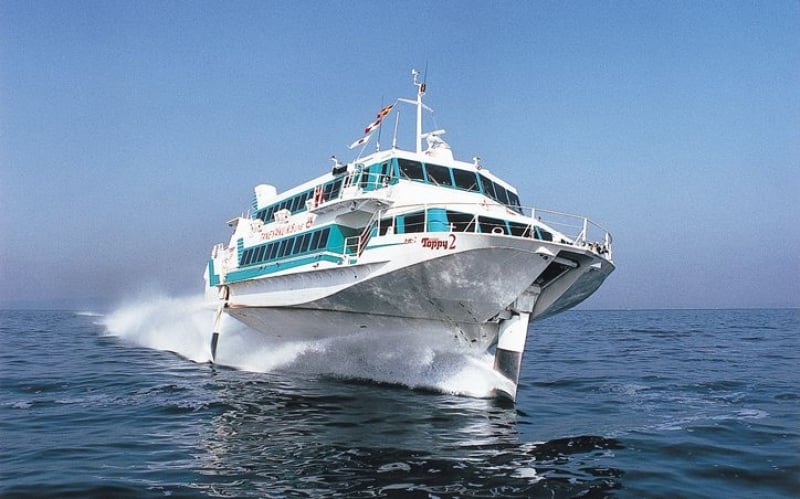
Image credit: H.I.S. Japan | Official Website
For a faster and more comfortable sea journey, opt for the Yakushima/Tanegashima Excursion Ticket, which lets you hop aboard the high-speed Toppy or Rocket jetfoil. These sleek ferries glide across the ocean in just about two hours, offering scenic views of the coastline
Upon arrival, rent a local car to explore the island at your own pace. This is where the Shima no Tabi spirit truly comes alive. Roads here are scenic yet quiet, winding through ancient forests and along coastal cliffs.
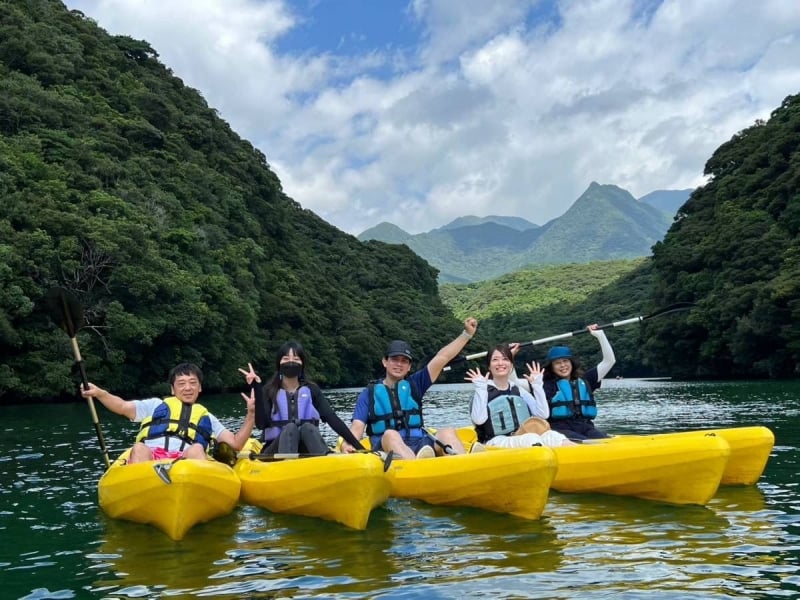
Image credit: H.I.S. Japan | Official Website
Spend the morning exploring Senpiro Falls and Toroki Falls, both easily reachable by car. Then, in the afternoon, go on one of Yakushima’s most memorable FIT experiences: the Kayaking Adventure on Anbō River, or a sightseeing bus tour.
As you paddle through crystal-clear waters surrounded by dense forest, you’ll see Yakushima’s rich biodiversity up close, from giant ferns to soaring cedar trees. It’s a peaceful yet invigorating way to immerse yourself in the island’s wilderness, perfectly capturing the Shima no Tabi ideal of connecting with nature.
Wrap up your day with a visit to a local onsen before enjoying a hearty island dinner featuring flying fish and locally grown vegetables!
Day 5: Yakushima – Hiking the ancient forests

Image credit: ©Naonobu Minagawa
Today is all about immersing yourself in Yakushima’s mystical nature. Start early and set off for a hike through Shiratani Unsuikyo Ravine, where moss-covered rocks and giant trees create an almost fairytale-like atmosphere. This forest famously inspired Studio Ghibli’s Princess Mononoke.
This is an ideal moment to join the Yakushima Private Island Sights Tour. With an English-speaking guide, you’ll have the opportunity to trek at your own pace for half a day and then let the guide tailor the rest of the experience to your preferences.

Image credit: ©Soramido-Yakushima
For a challenge, hike to Jomon Sugi, Japan’s oldest and most sacred cedar tree, believed to be over 2,000 years old. The trek takes around 8 to 10 hours round trip, but rewards you with an awe-inspiring glimpse into deep time!
TripZilla tip: Book an English-guided tour of Shiratani Unsuikyo with an experienced local expert.
If you prefer something lighter, opt for Yakusugi Land, a shorter forest trail showcasing ancient cedars and lush greenery.
In the evening, relax with a seaside soak at Hirauchi Kaichu Onsen, a natural hot spring that appears only at low tide. Or, enjoy fresh local seafood at a family-run restaurant.
This day encapsulates the soul of Shima no Tabi: the joy of exploration, the wonder of nature, and the peace of island life!
Day 6: Yakushima → Kagoshima
After days of adventure, take this day to experience Yakushima at a gentler pace — this is what Shima no Tabi (Island Journey) is all about: connecting with the island’s natural rhythm.
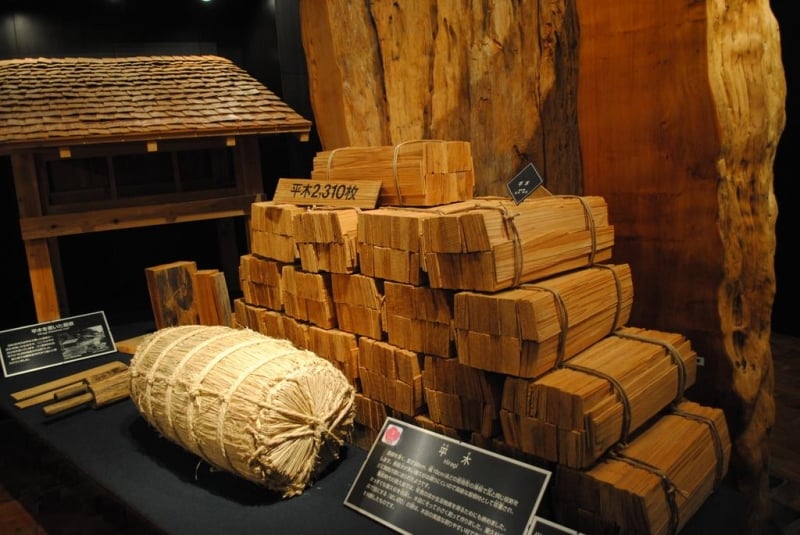
Image credit: Kagoshima Prefecture and Kagoshima Prefectural Visitors Bureau | Official Website
Start your morning with a forest bathing session or a wellness walk around Yakusugi Land’s easy trails, soaking in the tranquillity of ancient cedar groves. If you’re interested in local craftsmanship, join a Yakusugi woodcraft workshop called the “Sennin’s chopstick making experience”, where artisans teach you how to craft your own unique chopsticks using the island’s famous Yakusugi cedar wood!

Image credit: Japan National Tourism Organisation | Official Website
Next, drive along the scenic Western Forest Road (Seibu Rindo), It’s one of Japan’s most beautiful coastal drives, where wild deer and monkeys often wander near the roadside. Stop at Nagata Inakahama Beach, famous for its soft golden sand and as a nesting site for sea turtles (between May and August).
In the afternoon, unwind by visiting a tea plantation, tasting the island’s signature green tea while learning how it’s cultivated in volcanic soil and misty mountain air.
By early afternoon, it’s time to board the Yakushima II car ferry from Miyanoura Port (1:30 p.m.) back to Kagoshima, arriving at around 5:40 p.m. As you sail away, take one last look at Yakushima’s lush peaks fading into the horizon, a fitting farewell to your island adventure.
Day 7: Kagoshima → Fukuoka
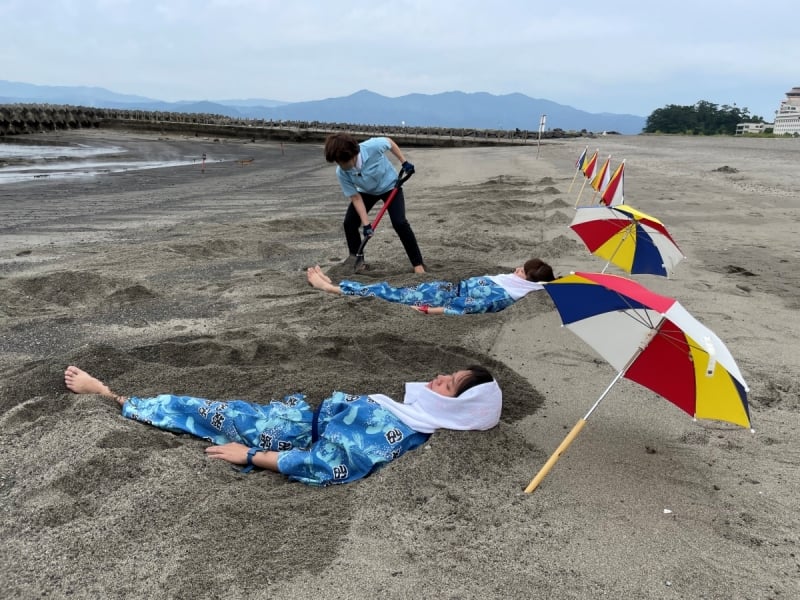
Image credit: ©K.P.V.B
After breakfast, wrap up your Kyushu self-drive adventure by returning your rental car in Kagoshima. If time allows, detour to Ibusuki for its famous natural sand baths, where you’re buried in warm volcanic sand by the beach. It’s a truly unique Kyushu experience.
Then, board the Shinkansen (bullet train) from Kagoshima to Fukuoka, a comfortable and scenic ride that marks the final stretch of your Shima no Tabi journey. As the landscapes of southern Kyushu glide past your window, take a moment to reflect on a week filled with mountain drives, hot springs, volcanic vistas, and island serenity!
Day 8: Fukuoka → Singapore
Enjoy a leisurely morning in Fukuoka before heading to the airport for your flight back to Singapore. If time allows, grab a last bowl of Hakata ramen or browse for souvenirs at Canal City Hakata or Tenjin Underground Mall.
As your Shima no Tabi adventure comes to an end, take home not just memories of Kyushu’s scenic drives and warm hospitality, but also the best memory of this self drive in Japan and its island journey!
Self-Drive Essentials for Singapore Travellers
Carry an International Driving Permit (IDP) and a Singapore licence.
Ensure your rental car includes English GPS, shows ETC (toll) functionality, and covers island access/ferry drop-off.
Fuel stations, parking and rest stops are abundant in Kyushu; on Yakushima, expect narrower roads and fewer amenities.
Spring (March to May) or Autumn (October to November) provide mild weather and excellent scenery. Besides, do note that Yakushima is very wet (rainforest climate), so remember to plan your outfit accordingly.
Travel agencies like H.I.S. Japan offer Shima no Tabi-like 3-day to 1-day trip packages that include accommodation, food, as well as an English-speaking guide!
Don’t miss out on H.I.S. Japan’s self drive packages to experience the mystical, ancient cedar forests and rugged coastlines of Yakushima at your own pace. Their specialised Yakushima self-drive tour packages provide the ultimate flexibility and convenience needed to explore the island.
This Shima no Tabi-inspired route brings together city energy, volcanic drama, island serenity, and ancient forests, all in one unforgettable drive. For Singaporeans seeking a new kind of adventure beyond the usual tourist spots, this is your sign to try out self drive in Japan!
Brought to you by H.I.S. Japan.




